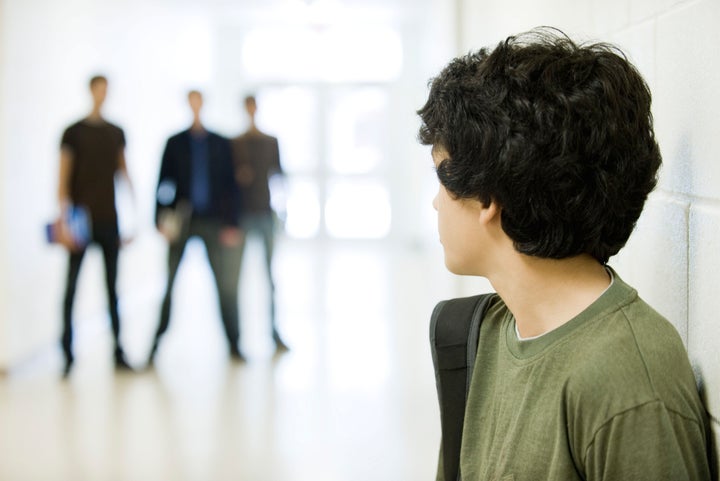
Picture the following scenario.
A fifteen year old boy expresses fear for his life to his mother. He is repeatedly harassed by another group of boys. They beat him up after school twice in a six-month period, knocking his teeth out the first time, and then knocking his newly-restored teeth out again. They threaten to kill him on Facebook. His mother seeks help from authorities, but feels her cries fall on deaf ears. Finally, he is out one bright summer afternoon with his brother when his tormenters attack and stab him. He is dead by dinner time.
Where does your mind go? What do you expect happens next? If you live in Massachusetts, as I do, you think immediately of Phoebe Prince, the teenager whose suicide in response to incessant bullying led to national outrage and state-wide anti-bullying legislation.
Even if you weren't aware of Phoebe Prince, the story probably seems all too familiar these days. You feel a little sick to your stomach. You are stunned by yet another horrible story of virulent, unchecked bullying. What is happening in our schools? Our neighborhoods? How have we reached this point, and what do we do about it? It could happen to our own kids, in our own schools, in our own towns.
Now picture another scenario.
It is a scorching hot July day. You are driving home from work downtown. A brief story comes on your local news radio station. Several black young men were involved in an altercation in a part of the city known for severe spates of summer street violence. Two were stabbed. One, age fifteen years, is dead. The perpetrators have not been identified. The young men are believed to be gang-involved.
Now where does your mind go? Do you feel sick? Outraged? Or does it sound typical, unsurprising? Does it make you worry for your own kids? Their schools? Are you looking for national outrage or statewide legislation? Or do you shake your head in dismay over the way these young thugs keep killing each other?
As you, of course, have figured out by now, they are the same story. And I did not tweak or embellish. The bullying accounts come from the boy's mother, and multiple sources have said they believe the incident was gang-related.
Now one more.
The stabbing happened a week ago in a Boston neighborhood. I was with a teenaged friend of the deceased when she got the call that he had been stabbed and likely was dead. Despite which scenario you landed on once you had heard both -- and I am guessing the latter one stuck -- I can tell you that to her this was yet another devastating death of a teenage person of color in her world. It was an all-too-familiar story that she never should have experienced, and probably now believes with a dull, numbing certainty will happen again. It isn't the first time one of her friends has died.
I didn't spell all this out to have an easy go at racism. Instead, as the days after the death unfolded and I heard more of the official and unofficial accounts, I was struck by the incredible power of narrative and who is telling it.
Three things hit me. First, the expected account gets the credibility. Once the media reports that the parties were gang-involved, that becomes the dominant narrative. The mother's story of bullying won't even seem like a credible issue in the face of the gang "angle."
Second, we are drawn to the narrative we already are inclined to believe. If you are an African-American mother from an urban neighborhood, the mother's perspective probably held deeply for you. If you are white, rural and/or suburban, most likely the shared sense of outrage and tragedy dissipated significantly or altogether when you heard the gang version. It ceased being a story that so easily could be your own.
Third, we lose the young person's narrative completely. We hear it as adults in a world of adults, and we process and discuss it as adults will do. Meanwhile, the kids anywhere near the story are isolated, hurting and scared. For them, this is reality and it keeps edging closer. Ironically, that's true whichever version of the story you adopt.
I am a big fan of finding the ways we are all in this together as Americans. I believe it is essential to surviving the tumult of our times. Personally, I believe the truth here is one of degrees. Violent bullying and gang life are on a complicated continuum that involves identity, community norms and the risk of being an outsider. It takes stepping outside our engrained narratives even to recognize common problems, let alone put our best thinking together to solve them. But I believe we can.
Maybe that makes me naïve. I'll take naïve any day if it reduces the chances of the teenager's version happening in the future.
